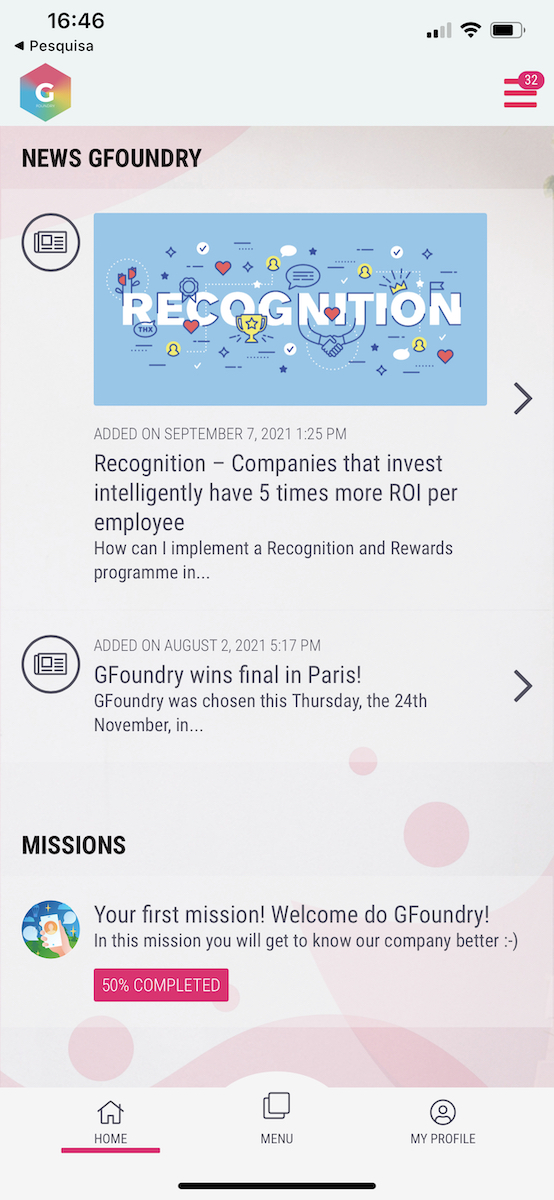 What is cultural transformation?
What is cultural transformation?
Cultural transformation is the process of changing the culture of an organization in order to make it more aligned with its strategic goals. This can involve a change in values, beliefs, behaviors and processes.
Cultural transformation can be a challenging process, but it can be very rewarding. When successful, it can lead to significant improvements in organizational performance, such as increased productivity, improved customer satisfaction and reduced costs.
Cultural Transformation is also a complex and extremely strategic process for many organizations. Being inserted in a context where change is the watchword of the day, it is common that companies themselves also have to adapt their internal structure to be able to withstand these changes – whether positive or negative.
The culture should also be aligned with the strategic objectives of the organization. This should be the enabling basis for achieving the defined objectives. Therefore, if the culture does not support the business strategy to achieve the desired results, then it should be reviewed and adapted as soon as possible.
Furthermore, as the external and internal environments change over time, so should the culture be adapted and reinforced when necessary.
There are several reasons that may indicate the need to implement a Cultural Transformation process, such as:
- Changes in the Internal Structure
- Changes in the Business
- Changes in the Strategic Objectives
- Changes in the Market where the company operates
- Changes in the socioeconomic context
However, the process of Cultural Transformation is not simple. On the opposite side, changing the collective behaviour of an organizational structure is extremely complex and should always be planned for the medium/long term.
There are several steps that organisations should take during a cultural transformation process and they are mostly linked to 3 main phases.
1. Assessment Phase
At this stage, it is important to conduct an internal study in order to understand how the employees perceive the organization’s culture. It is crucial that the assessment is as detailed as possible in order to have a reliable diagnosis. The result of the assessment will be a current snapshot of the company’s culture.
2. Definition Phase
After the Assessment phase, it is possible to define which changes need to be implemented. When the organisation defines which culture is desirable to be observed internally, a comparison is made with the current picture, and guidelines are drawn to enable a cultural adjustment. This adjustment should be made taking into account the objectives of the organisation itself.
3. Implementation Phase
Finally, there is the most practical phase of this process: its implementation. The activities that will allow an adjustment of the organization’s culture should be defined. It is important to bear in mind that this process does not happen overnight or from one week to the next. On the contrary, it is a process that may take some time before new collective behaviours can be observed.
How can GFoundry support my organization in the process of Cultural Transformation?
GFoundry is a digital solution that boosts employee engagement through its gamification engine. Taking a holistic view of all phases of Talent Cycle management, the platform can support essential processes in the management of Talent in your organization.
During the Cultural Transformation process, and being in a phase of Implementation and dissemination of culture with people, it is essential to define how communication will be done. More than just communicating the values with which the company communicates, culture itself goes a bit further.
Internal Communication
Collective behaviour is influenced by the company’s internal communication, which should be aligned with the culture to be implemented. In this way, internal communication becomes an essential factor to successfully carry out a Cultural Transformation process within the organization. Therefore, all interactions that take place between the company and the employee should respect the previously defined standards, so that it is possible to disseminate the values correctly.
Through a solution like GFoundry, you can be in direct contact with employees in a simple and agile way, while at the same time disseminating the values that you want to transmit to all employees.
News Feed
One of the main components linked to internal communication at GFoundry is the News Feed. On the homepage, users can access news posted by their organization (which can be filtered by groups of people). These News items may include content such as internal events, new employees joining, or even themed content related to important days.
Depending on the organization’s strategy, messages can be defined that will be transmitted over time in order to reinforce the intended messages.
Push Notifications
Another essential tool to communicate with employees are push notifications. For example, if you want to implement a culture of closeness, you can send notifications that make the employee feel closer to the organisation, with inspirational stories or messages that encourage a pleasant organisational climate.
Being simple and agile, you can send short messages instantly, which can be filtered for groups of employees.
Subscribe to GFoundry Newsletter: Weekly Insights on HR’s Most Pressing Topics
Keep on reading: HR Trends: What Will HR Look Like Next Year?
If you would like to find out more about how can GFoundry support your Culture Transformation process, contact us and book a demo!

Ready to get started?
Take the next step and learn more about how GFoundry can help you.

 What is cultural transformation?
What is cultural transformation?